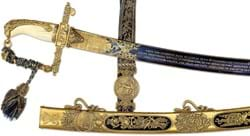First there was the pleasing omission of HMRC’s ‘Making Tax Digital’ and quarterly reporting, two schemes recently postponed after protests about their impact on small business cash flows.
Then there was an audible sigh of relief – for now, at least – on the manifesto’s lack of reference to the ivory trade, in stark contrast to the 2015 version.
True, the absence of the ‘i’ word is no indication of the government’s intentions. Some would have preferred the certainty of a more explicit, qualified pledge to allow trade in ivory proven to date pre-1947. At least one person close to the matter told me the consultation with the trade on proof of age, promised by Defra for January this year, may never happen.
On the plus side, however, omitting mention of ivory leaves a Conservative government with room to manoeuvre (in a way its pledges on Brexit have not done).
Perhaps the status quo – post-1947 ivory requires an Article 10, unworked ivory cannot be sold, regardless of date – may even be allowed to remain.
After all, the trade bodies have outlined a clear position, stating their abhorrence of modern poaching. The UK already has some of the world’s strictest rules on ivory, as BAMF’s Anthony Browne points out.
Regardless of this, expect our trade bodies to keep engaging with government and civil servants, perhaps even encouraging an industry-created system of ivory ‘passports’ that is workable and financially viable. Such self-regulation, not a new concept, may prove antique ivory’s way forward.
“Art and antiques business leaders were more occupied by what wasn’t in the manifesto














